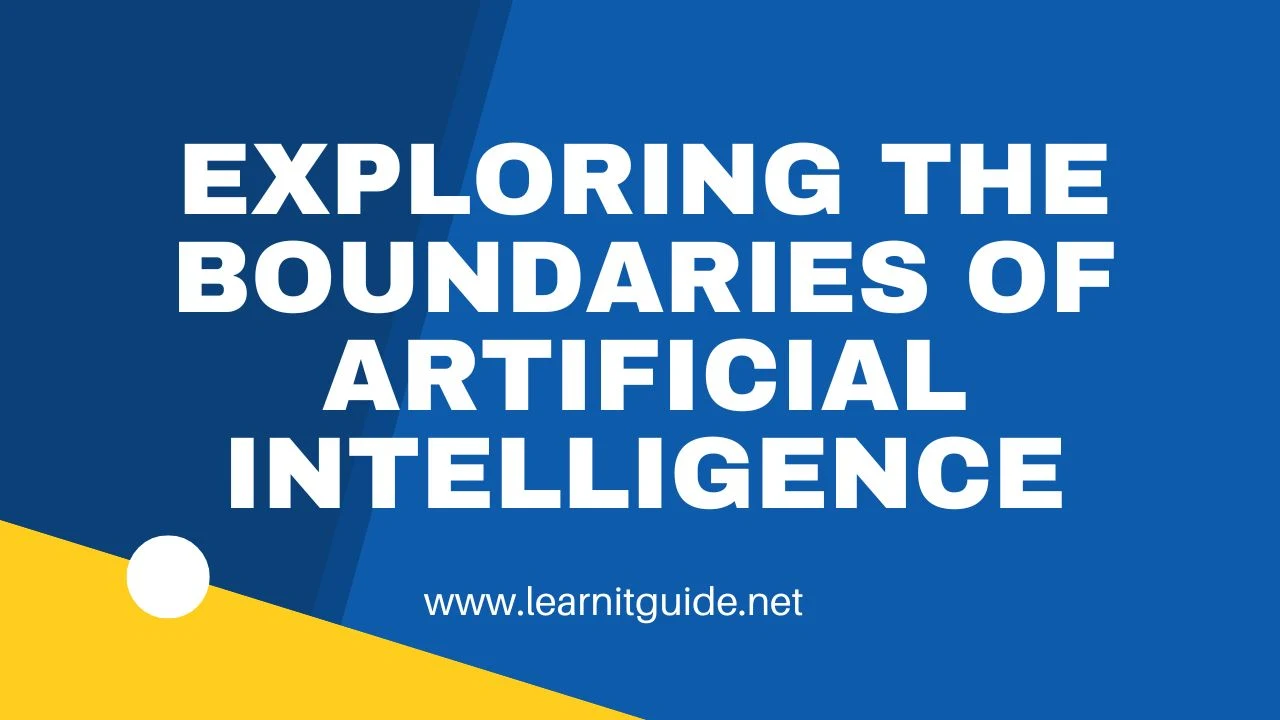This post will help you to understand about Exploring the Boundaries of Artificial Intelligence.
If you are interested in learning, Request you to go through the below recommended tutorial.
DevOps Full Course Tutorial for Beginners - DevOps Free Training OnlineDocker Full Course Tutorial for Beginners - Docker Free Training Online
Kubernetes Full Course Tutorial for Beginners - Kubernetes Free Training Online
Ansible Full Course Tutorial for Beginners - Ansible Free Training Online
Openstack Full Course Tutorial for Beginners - Openstack Free Training Online
Let's Get Started.
Exploring the Boundaries of Artificial Intelligence
Artificial Intelligence (AI) has come a long way since its inception in 1956. From simple machine learning algorithms to complex deep neural networks, AI has been revolutionizing the way we live, work, and interact with technology. Today, AI is being used in various domains such as healthcare, finance, transportation, and manufacturing, to name a few. However, there are still many boundaries that need to be explored when it comes to the capabilities and limitations of AI.
The Potential of AI
Artificial Intelligence has the potential to bring about a radical change in our lives, especially in terms of how we interact with technology. With AI, we can automate tasks that were previously performed manually, and thus, increase efficiency and reduce the chances of human error. This is especially relevant in domains such as finance, where the use of AI has led to more accurate predictions and faster processing of transactions.
In addition, AI can also help us in decision making by analyzing large amounts of data and presenting us with insights that we might not have been able to discern on our own. For example, in the healthcare domain, AI is being used to analyze patient data and provide doctors with personalized treatment plans. This not only leads to improved patient outcomes but also reduces the time and resources needed for treatment.
The Limitations of AI
Despite the tremendous potential of AI, there are several limitations that need to be addressed before we can fully realize its potential. One of the biggest limitations of AI is its inability to understand and interpret human emotions. This can be a significant drawback, especially in domains such as healthcare, where empathy and understanding are critical.
Another limitation of AI is its inability to generalize from examples. AI algorithms can only perform tasks that they have been trained to perform, and any deviation from this training can result in incorrect outputs. This means that AI systems are only as good as the data that they are trained on.
In addition, AI algorithms are also prone to making biased decisions, especially if the training data is biased. For example, if a machine learning algorithm is trained on data that only includes people from a certain ethnic group, it may not be able to accurately recognize people from other ethnic groups. This can lead to serious consequences, such as discrimination and unequal treatment.
Exploring the Boundaries of AI
To fully explore the boundaries of AI, it is important to consider both its potential and its limitations. For example, researchers are currently exploring the use of AI in fields such as natural language processing and computer vision, where the aim is to enable machines to understand and interpret human speech and images.
Another area of research is the development of AI algorithms that can operate in real-time, and make decisions based on changing conditions. This can be particularly useful in fields such as autonomous vehicles, where the AI system needs to be able to make quick and accurate decisions based on real-time data.
Finally, researchers are also exploring the use of AI to help address social and ethical issues, such as discrimination and inequality. For example, AI can be used to detect and correct biased decision-making algorithms, or to provide personalized and equitable treatment to patients based on their individual needs and circumstances.
Conclusion
Artificial Intelligence is a rapidly growing field that has the potential to bring about a radical change in the way we live and work. However, there are still many boundaries that need to be explored in order to fully realize its potential. By exploring the potential and limitations of AI, and by investing in research and development, we can ensure that AI is used for the benefit of all and that its capabilities and limitations are fully understood.
That’s it for this post, Hope you have got an idea about Exploring the Boundaries of Artificial Intelligence.
You can also refer similar links below on Artificial Intelligence topics.
The Rise of Artificial Intelligence A Comprehensive Guide
The Impact of AI on Society and Culture
How AI is Revolutionizing Industries and Creating New Jobs
The Advancements of AI Past, Present, and Future
Artificial Intelligence and Its Potential to Solve Global Challenges
Keep practicing and have fun. Leave your comments if any.
Support Us: Share with your friends and groups.
Stay connected with us on social networking sites, Thank you.








0 تعليقات